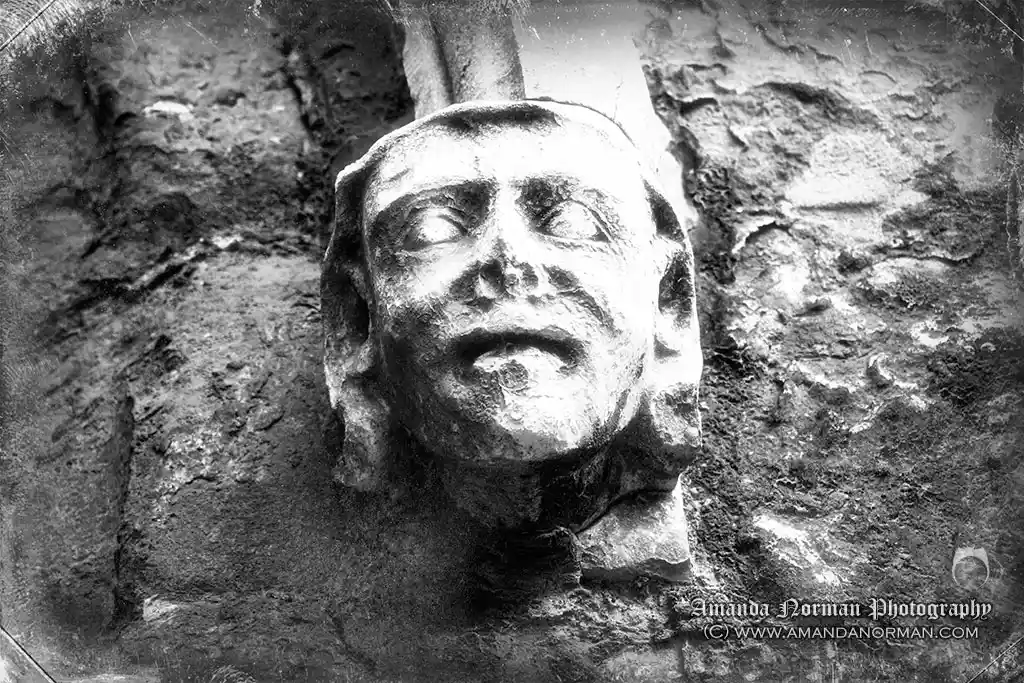I love taking photographs of gargoyles and grotesques, but do you know what the difference is between a gargoyle and a grotesque?

What is a Grotesque?
Firstly, a grotesque does not serve the purpose of filtering water away from a building to prevent damage to the stonework. This is the function of a gargoyle!
It is however, sometimes hard to differentiate between some gargoyles and grotesques due to erosion. Some of these fantastic creatures have been sitting there for centuries.
When distinguishing between the two, look for holes or evidence of pipes. This is evidence of directing water away from the building. If you find evidence, you are looking at a gargoyle.
When I was taking my photograph above, my inspiration was of course, Hammer Horror. It does though show, how it can be difficult determining the difference between the two, especially when looking up at them. Providing there are no holes for a water pipe or a chute, they are grotesques.
In later centuries, grotesques began taking on the form of human faces. More than likely they would be financing the upkeep of the building. Also, notable figures of the community.
The word grotesque was commonly in use in the 18th century. Coined in Italy in the late fifteenth century we can trace it back to the ancient Roman’s who painted the walls of their basements, known as grottoes. Ref Wikipediahttps://en.wikipedia.org/wiki/Grotesque
What is a Gargoyle?
Gargoyles have a specific function of spouting water away from a building. They are stand out from the building a lot more than a grotesque to allow that water to flow outwards.
Most gargoyles feature a hole in their back allowing for the insertion of a pipe. Commonly, the other end of the pipe is coming out of its mouth.
Gargula is the Latin word for throat. Gargoyle evolves from this Latin word. Ref Wikipedia.
Gargoyles and Grotesques
Grotesques and gargoyles prior to the sixteenth century are mainly creatures or human-animal hybrids. Many people find these to be strange, ugly, unpleasant, frightening or fantastical. It is sometimes difficult to work out the true meaning of such fascinating carvings, but it is generally thought that both gargoyles and grotesques are termed as ‘apotropaic‘.
Apotropaic refers to a form of protecting magic.
In medieval times, churches and cathedrals were renowned for placing them above doorways and windows. Thus, placing them here is protecting the building from evil spirits and witches entering and instead, warding them off.

